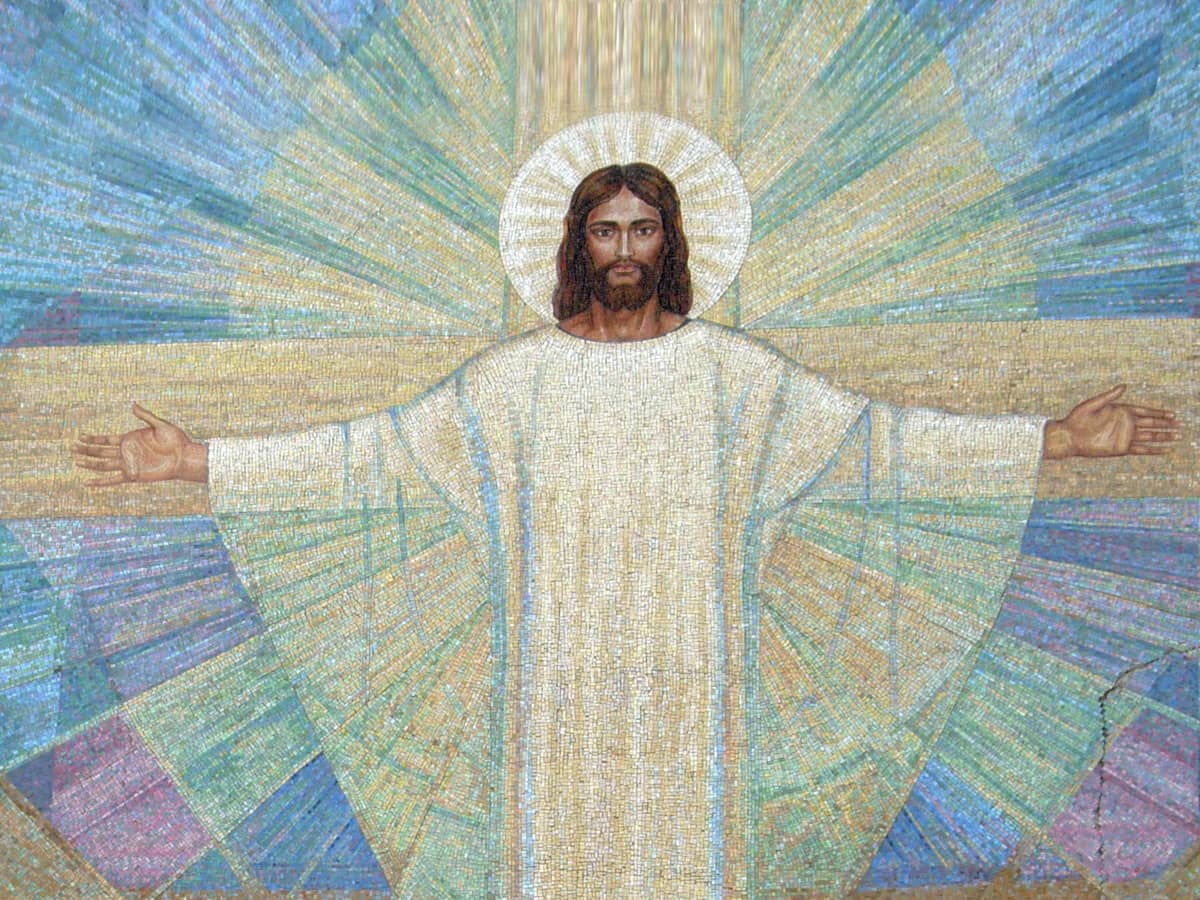
The First Ecumenical Council
Also called the Council of Nicaea, the First Ecumenical Council gathered shortly after Emperor Constantine converted to Christianity. This council was called to address a number of issues. The first and most important task was for those gathered in Nicaea to determine a single creed that embodied the most basic beliefs of Christianity. At the time of the council, 325 A.D., there were many different Christianities. Among these Christianities were Adoptionists, Marcionites, Gnostics, Arianists, Docetists, Origenists, Ebionites and those that would come to be called Orthodox. A single truth was needed to unify these scattered Christian communities. The creed the council successfully hammered out would be modified over the centuries as further issues arose, but its basic form remains unchanged today. This statement of doctrine was named after the city in which it was created: the Nicene Creed.The First Ecumenical Council also had to decide what to do about lapsed Christians. Prior to Constantine’s conversion, Rome had persecuted Christianity ruthlessly. In the face of the torturous death that awaited any Christian, many people recanted their faith or at least pretended to do so when faced with an angry Roman legionnaire. The council had to decide if these lapsed Christians would be allowed to repent and rejoin the Church or if they would remain outcasts from their own faith.
The Council of Nicaea would also attempt to determine the relationship between the Father and Son. According to this council, they had the same essence but were different persons. The controversy surrounding the relationship of the Father and Son would, however, continue to haunt future Christian leaders.
The Second Ecumenical Council
It was at the Second Ecumenical Council that one of the central doctrines of Christianity was decided. It was at the Second Ecumenical Council, also called the First Council of Constantinople, in 381 A.D. that formally addressed the doctrine of the Holy Trinity. The place of the Holy Spirit in the Trinity was debated, and the controversy would be reopened nearly 700 years later during the Great Schism when the Roman Catholic and Orthodox Churches would separate forever.The Third Ecumenical Council
The Third Ecumenical Council was held in 431 A.D., and it lead to the first schism within Orthodox Christianity. The topic of this council, sometimes called the Council of Ephesus, focused largely on the relationship and importance between Christ’s divine and human sides. One group of Christians, known as monophysites, felt that it was the divine nature of Jesus that was most important, and His human side should not be as emphasized as His divine nature. The other Christians, called dyophysites, felt that Christ’s divine and human sides should be emphasized equally. The dyophysites carried the day, and it became heresy to only emphasize Christ’s divine nature. The monophysites, however, were unhappy with this ruling and refused to follow it. Monophysite churches continued to flourish despite the decision of the Council of Ephesus. It would take more than a century for the issue of monophysitism and dyophysitism to be “solved,” but the fallout from that “solution” would change Christianity forever.The Fourth Ecumenical Council
Many Christian leaders hoped that the Council of Ephesus had laid the issue of monophysitism and dyophysitism to rest, but so many Christians were still practicing monophysite heresy that another ecumenical council was called just 20 short years after the Council of Ephesus. The Fourth Ecumenical Council, also called the Council of Chalcedon, attempted to implement the ban on monophysitism that the Third Ecumenical Council had proposed. The Council of Chalcedon fared no better than the Third Ecumenical Council had two decades previously. Monophysitism simply refused to die.The Fifth Ecumenical Council
The Fifth Ecumenical Council was the last ecumenical council to involve a unified Christianity. Christian leaders entered the Second Council of Constantinople as part of a single monolithic religion. When they left again, Christianity had suffered its first schism.Held in 553 A.D., the Fifth Ecumenical Council was the last attempt to end monophysitism. The Second Council of Constantinople reiterated that the official truth of Christianity was dyophysitism. The monophysites, however, refused to follow the ruling and left the Orthodox Church. This split may not have occurred had the ecumenical councils not been seen as a pathway to political power. Pope Vigilius had supported the monophysite position, but he was kidnapped by Emperor Justinian and tortured until he accepted the ruling of the council. Had Vigilius been allowed to stay true to monophysitism, there is the possibility that a middle ground would have been found, and the Christian religion would have remained unified.
Some scholars argue that the schism between monophysites and dyophisites actually occurred in 431 A.D. when monophysitism was first declared to be heresy. Others, however, claim that the Council of Ephesus was the beginning of the end but the religion did not actually split until the Second Council of Constantinople. Regardless of when the schism actually occurred, it changed the church forever. Dueling Christianities would continue to exist into modernity, with monophysitism surviving today as the Armenian Church, the Coptic Church of Egypt and the Ethiopian Church.
The Sixth Ecumenical Council
The Sixth Ecumenical Council was held in Constantinople in 680 A.D. This council, also called the Third Council of Constantinople, was proposed by the emperor in hopes of reuniting the Christian faith. The emperor had suggested monothelitism as a middle ground between monophysites and dyophysites. Monothelitism suggests that Jesus had one will. Christian leaders, however, rejected this “compromise” and declared that Christ had a human and a divine will.The Seventh Ecumenical Council
The last ecumenical council was held in the same city as the council that first brought the religion together. The Seventh Ecumenical Council was held in Nicaea in 787 A.D. and focused on questions about Christian art. Also called the Second Council of Nicaea, this council debated whether Christians could depict God, Jesus and heavenly beings in artwork. Some Christians were iconoclasts and felt that icons broke the second commandment and could lead to idolatrous behavior. Other Christians were iconodules and felt that icons were acceptable as long as they were approached like texts. They could be revered and honored without being worshipped. Iconodules argued that art offered a window into God. Given the amount of art found in Christian churches today, it is probably apparent that iconodules carried the day.Many Christians relegate the ecumenical councils to a series of bland historical footnotes. These councils, however, determined the fate of Christianity and were fraught with tension and drama. Attendees had the weight of an entire people on their shoulders and knew very well that whatever they decided would affect Christians everywhere for generations to come.

